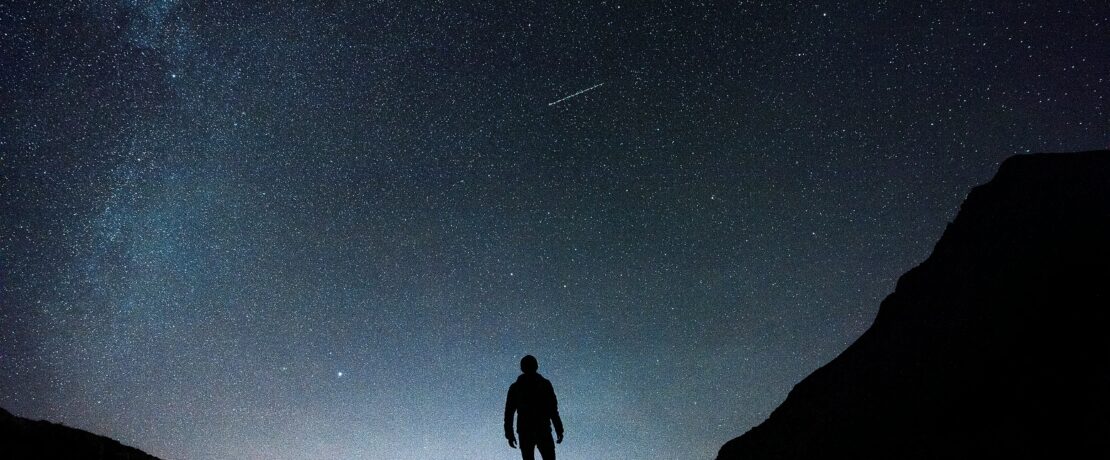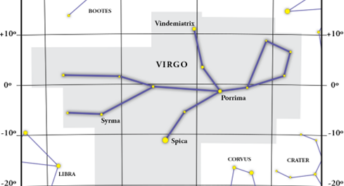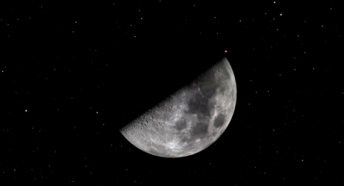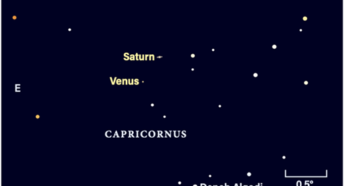Dark Skies Update – April 2024
I am writing this with just a couple of days left in the month of March. I hope, unlike myself that you have had an opportunity to see the Northern Lights as well as some sight of And Comet 12P/Pons-Brooks which will still be visible in April.
First things first – it is astronomical – the clocks go forward this coming weekend giving better morning viewing.
For the family April is a good month for viewing the Moon, clouds permitting, get the binos out and start identifying areas of the moon – look at a moon map online if you don’t have a paper one and set out to locate three areas this month. Build on it each month!
High lights for April
Comet 12P/Pons-Brooks visits the inner solar system just once every 71 years, making it a once-in-a-lifetime viewing event for most of us. It will make its closest approach to Earth in June, but it will be at its brightest and easiest to spot when it makes its closest approach to the sun on April 21.
The comet is named after two renowned comet hunters: Jean-Louis Pons (1761-1831) and William Robert Brooks. Pons discovered it visually in 1812 using telescopes and lenses of his own design. Initially, it appeared as a “shapeless object with no apparent tail,” but over time, it brightened and became dimly visible to the naked eye.
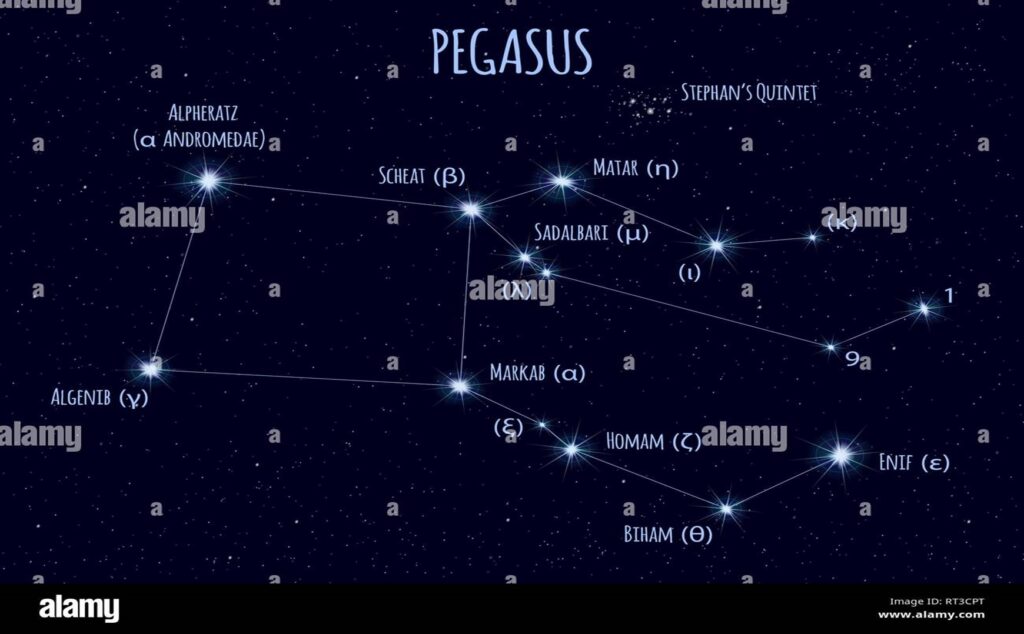
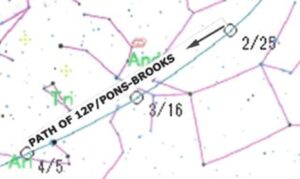
Hopefully these two star charts will assist in locating the Comet!! Use Pegasus as your cue.

This chart allows you to find Pegasus in the skies – hopefully!
Picking out another star lets look at the Pan handle of the Plough or Great Bear
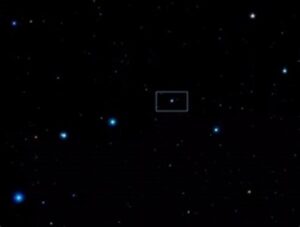
The name Megrez is the star’s traditional name. It comes from the Arabic al-maghriz, meaning “the base.” The name refers to the base of the bear’s tail and the star’s position in Ursa Major.
Even though it is not a conspicuous star by itself, Megrez is easy to find because it forms one of the best known asterisms in the night sky. An asterism is an observed pattern or group of stars in the sky – not necessarily a constellation.
Sixth of April see the Moon low in the sky just before sunrise and it has Mars showing well in the morning sky above at Saturn at 10 o clock ( Left)
Watch out for Chris Lintott’s book “An accidental universe” reviewed on Amazon as:
Our Accidental Universe: Stories of Discovery from Asteroids to Aliens by Chris Lintott (Author)
An astonishing tour of the key astronomical events of the past century, and of all the accidents and human error involved in our pursuit of asteroids, radio waves, new stars and alien life.
A riveting real-life Hitchhiker’s Guide to the Galaxy.’ Telegraph
‘Lintott’s boundless enthusiasm for everything cosmic makes it hard to put this book away once you start reading.’ BBC Sky at Night Magazine
‘Entertaining and enlightening’ – The Idler
Perhaps you would like a book club session on this book by Zoom. Get in touch if you are interested
